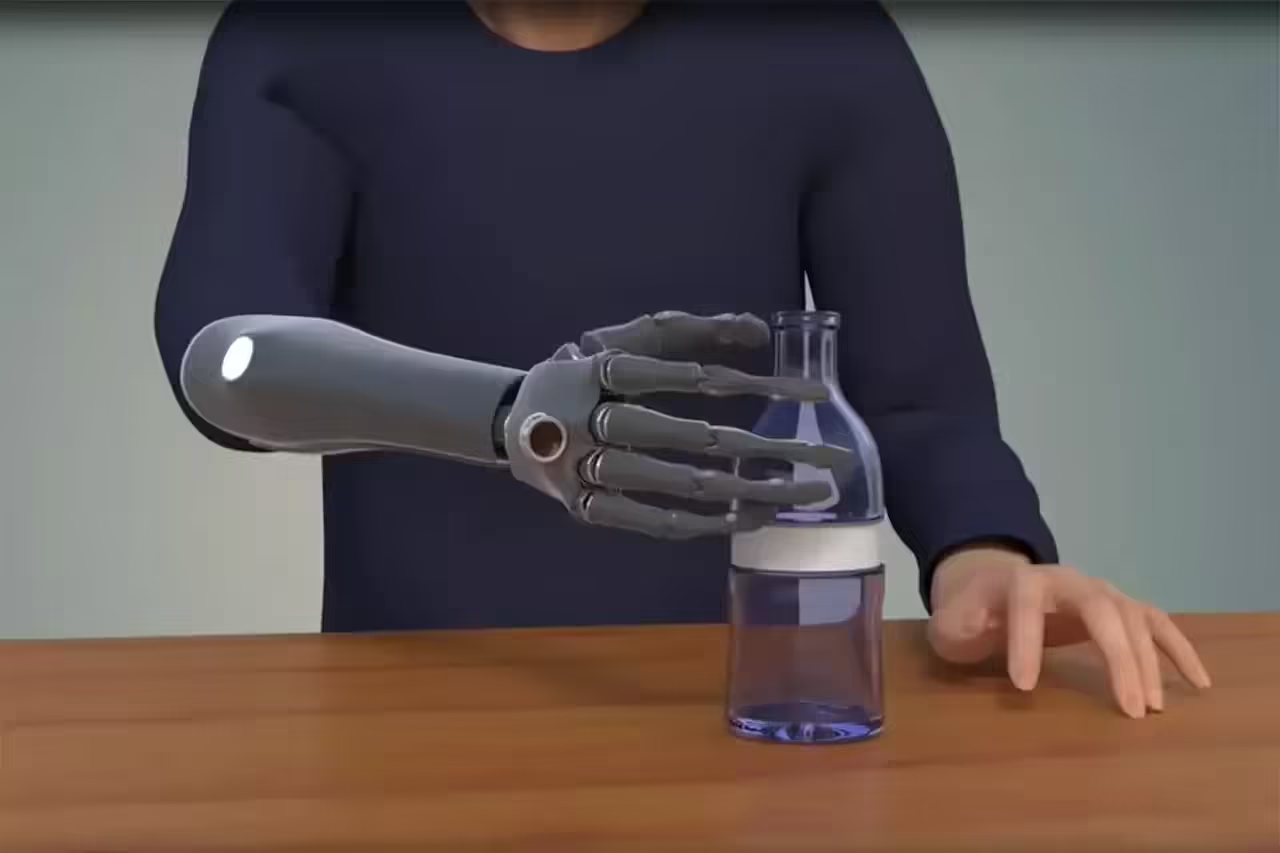
In the not-so-distant past, the idea of a bionic hand that seamlessly integrates with the human body seemed like a far-fetched dream straight out of science fiction. However, recent advancements in the field of prosthetics and bionics have brought us closer than ever to turning this dream into a reality. The integration of bionic hands with the human body is revolutionizing the way we think about amputation and disability, offering individuals the chance to regain lost functionality and even enhance their natural abilities.
The Bionic Hand: A Technological Marvel
At the heart of this revolution lies the bionic hand—a marvel of modern engineering and medical science. These artificial hands are not just sophisticated mechanical devices; they are intricately designed to mimic the dexterity and complexity of the human hand. In many cases, bionic hands are equipped with sensors, actuators, and an advanced control system that allows for intuitive movements and precise control.
The Interface Between Man and Machine
One of the critical aspects of bionic hand integration is the development of advanced interfaces that allow for seamless communication between the device and the human body. This interface could involve connecting the bionic hand to the patient’s nerves and muscles, enabling them to control the hand just as they would a natural one. Through these connections, patients can experience a level of control, feedback, and sensory perception that was once unimaginable.
Nerve Rewiring and Sensory Feedback
A major breakthrough in the integration of bionic hands with the human body is the concept of nerve rewiring. Researchers are exploring techniques to reestablish connections between the patient’s nerves and the artificial hand. This not only enables precise control of the hand’s movements but also provides sensory feedback, allowing patients to feel touch and temperature. The feeling of grasping an object or the warmth of a cup of coffee is no longer a distant memory.
Beyond Rehabilitation: Enhancing Human Abilities
While bionic hands are often associated with rehabilitation and assisting those who have lost a limb, they are not limited to this role. In fact, some bionic hands are designed to augment the abilities of individuals who already have functioning hands. This opens up new possibilities for human enhancement. Imagine having a bionic hand that allows you to play a musical instrument with extraordinary precision or to perform tasks that were once impossible due to human limitations.
The Future of Bionic Hands
The ongoing research and development in the field of bionic hands are leading us toward a future where the integration of these devices with the human body is seamless and commonplace. As technology continues to advance, we can expect bionic hands to become even more sophisticated, compact, and affordable. This means that not only will amputees benefit from this revolution, but society as a whole may see a significant shift in how we view and interact with bionic technology.
The revolution of bionic hands and their integration with the human body is not merely a scientific achievement but a testament to human resilience, innovation, and the unyielding desire to overcome limitations. As we move forward, it’s crucial to ensure that these remarkable advancements are accessible to those who need them, and that ethical considerations are taken into account as we navigate the uncharted territory of human augmentation.
Anatomy of a Bionic Hand: Components and Functionality
The bionic hand is a technological marvel that has revolutionized the lives of many individuals who have experienced limb loss. These modern engineering wonders are designed not only to restore lost functionality but also to provide an experience that closely resembles that of a human hand. In this article, we will delve into the anatomy of a bionic hand, its key components, and how this marvel of medical technology operates.
Basic Structure of a Bionic Hand
A bionic hand comprises several essential components that enable it to emulate the form and function of a human hand. These components include:
Outer Shell
The outer shell of a bionic hand is the structure that provides it with its form and appearance. It is designed to mimic the aesthetics of a human hand and can be made from materials such as silicone or plastic, allowing for a realistic appearance.
Sensors
Sensors play a critical role in a bionic hand by detecting tension, pressure, and other stimuli. These sensors are typically integrated into the fingertips and palm, enabling the hand to sense its environment and objects it interacts with. This sensory information is crucial for the user to have a sense of touch and grasp.
Actuators
Actuators are responsible for controlling the movement of the bionic hand’s fingers and joints. These motors and mechanisms are engineered to replicate the fine motor control found in the human hand. By receiving signals from the user or a control system, actuators enable the hand to perform intricate and precise movements.
Control System
The control system is the brain behind the bionic hand’s operation. It processes input from the user, typically through myoelectric signals generated by muscle contractions, or through other control interfaces. The control system interprets these signals and translates them into precise movements of the hand’s fingers and joints.
Power Source
A power source, usually in the form of rechargeable batteries, provides the necessary energy to operate the bionic hand. Ensuring a reliable power source is crucial to maintain functionality throughout the day.
How a Bionic Hand Works
The functionality of a bionic hand is a marvel of engineering and bioelectronics. Here’s how it works:
Sensor Input: When a user initiates movement or touches an object, the sensors in the bionic hand detect the pressure and tension applied. This information is then transmitted to the control system.
Control System Processing: The control system interprets the sensory input and converts it into specific instructions for the hand’s actuators.
Actuator Movement: The actuators receive the instructions and execute precise movements, allowing the hand to grasp, release, or manipulate objects as directed by the user.
Feedback Loop: Some bionic hands incorporate feedback mechanisms that provide sensory feedback to the user. This feedback can include sensations of touch and pressure, enhancing the user’s control and experience.
Advances in Neuroprosthetics: Connecting the Bionic Hand with the Nervous System
The integration of neuroprosthetics, particularly in the context of connecting a bionic hand with the human nervous system, represents a remarkable leap forward in the field of medical technology. It is a groundbreaking achievement that not only restores lost functionality but also offers a glimpse into the future of human-machine interfaces.
Understanding Neuroprosthetics
Neuroprosthetics, also known as brain-machine interfaces (BMIs), are innovative technologies designed to bridge the gap between the human nervous system and artificial devices, such as bionic hands. These interfaces facilitate bidirectional communication, enabling the bionic hand to receive commands from the brain while providing sensory feedback to the user. Here are some key components and advances in neuroprosthetics:
Implantable Electrodes
One of the fundamental components of neuroprosthetics is implantable electrodes. These tiny devices are surgically placed within the nervous system to record and stimulate neural activity. The use of microelectrodes has become increasingly precise, allowing for the selective recording of neural signals.
Signal Decoding Algorithms
Advancements in signal processing and decoding algorithms have played a pivotal role in enhancing the performance of neuroprosthetics. These algorithms translate neural signals into commands that control the movements of the bionic hand. Machine learning and artificial intelligence have significantly improved the accuracy and speed of this translation.
Sensory Feedback Systems
Recent breakthroughs in sensory feedback systems have enabled users of bionic hands to experience sensations like touch, temperature, and pressure. By connecting the bionic hand’s sensors to the neural interface, users can perceive and interact with the environment in a remarkably natural way.
Bridging the Gap: The Brain-Machine Interface
The key to connecting a bionic hand with the human nervous system lies in the brain-machine interface. This interface serves as the intermediary between the user’s brain and the artificial hand, facilitating communication in both directions. Here’s how it works:
Recording Neural Signals: Implantable electrodes record neural signals from the brain. These signals are generated when the user thinks about moving their hand or fingers.
Signal Decoding: Signal processing algorithms decode these neural signals, determining the user’s intended movements. This decoded information is then sent to the bionic hand.
Controlling the Bionic Hand: The bionic hand’s actuators receive the decoded commands and execute the corresponding movements, allowing the user to control the hand with their thoughts.
Sensory Feedback: When the bionic hand interacts with objects, its sensors send feedback to the neural interface. The interface translates this feedback into neural signals that the user can perceive as sensory feedback.
The Future of Neuroprosthetics
The future of neuroprosthetics is filled with promise and potential. Ongoing research aims to refine the technology further, making it more accessible and enhancing its capabilities. As neuroprosthetic devices become more compact, efficient, and user-friendly, they hold the potential to transform the lives of amputees and individuals with mobility impairments. Moreover, they open up new possibilities in human augmentation and the development of advanced prosthetic limbs that blend seamlessly with the human body.
Connecting the Brain to the Bionic Hand: The Brain-Computer Interface
The connection between the human brain and a bionic hand is an astounding achievement that redefines the boundaries of medical technology. This interconnection is made possible through the Brain-Computer Interface (BCI), an innovation that allows brain signals to control the operation of a bionic hand.
Understanding the Brain-Computer Interface
The Brain-Computer Interface, also known as BCI, is a technology that establishes bidirectional communication between the human brain and an external device, such as a bionic hand. The BCI enables the brain to emit electrical signals that are recorded and processed to control the movements of the bionic hand. Here are key components and concepts surrounding the BCI:
Intracranial Electrodes
Intracranial electrodes are surgically implanted in the user’s brain. These electrodes record neural activity, capturing signals that represent thoughts and motor commands. This technology has become more precise and safe with advances in neurosurgery and the miniaturization of electrodes.
Signal Decoding
The information captured by the electrodes is decoded by signal processing algorithms. These algorithms translate patterns of brain activity into specific commands that the bionic hand can understand and execute. The improvement of these algorithms has increased the efficiency and accuracy of the BCI.
Precise Control
The BCI enables precise control of the bionic hand. Users can think of movements such as grasping an object, and the bionic hand will respond almost instantly. This direct control capability is one of the major advantages of the BCI.
How the Brain-Computer Interface Works
The BCI functions as a communication bridge between the brain and the bionic hand. Here is how the process works:
Recording Brain Signals: Intracranial electrodes record the user’s brain activity while they imagine or plan movements.
Signal Decoding: Signal processing algorithms translate the brain signals into specific commands, such as “grasp” or “release.”
Transmission of Commands: The decoded commands are transmitted to the bionic hand through an electronic interface.
Execution of Movements: The bionic hand performs the corresponding movements in response to the received commands.
Challenges and the Future of BCI
While the BCI has made significant strides, there are technical and ethical challenges to address. These include the durability of electrodes, improving communication speed, and ensuring the privacy of brain information. However, the future is promising, with researchers working on more accessible and less invasive systems.
The Brain-Computer Interface has transformed the lives of individuals with amputations and severe motor disabilities. This technology not only restores lost functionality but also extends the possibilities of human-machine interaction. As BCI advances, we are likely to see increased adoption and an improvement in the quality of life for those who benefit from it.







